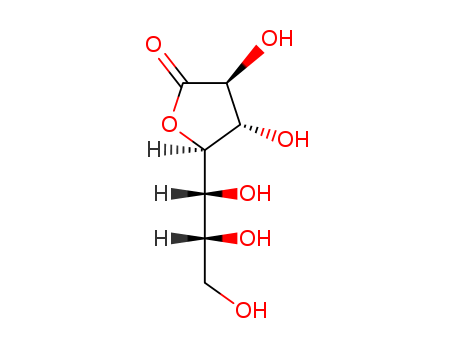- Chemical Name:Glucoheptonolactone
- CAS No.:60046-25-5
- Molecular Formula:C7H12O7
- Molecular Weight:208.168
- Hs Code.:2932209090
- European Community (EC) Number:262-037-0
- UNII:R320ILS1YQ
- DSSTox Substance ID:DTXSID301021206
- Nikkaji Number:J2.073.459K
- Wikidata:Q27287716
- Mol file:60046-25-5.mol
Synonyms:glucoheptonolactone;D-Glucoheptono-1,4-lactone;60046-25-5;UNII-R320ILS1YQ;R320ILS1YQ;EINECS 262-037-0;(2.xi)-D-Gluco-heptono-gamma-lactone;(4S,5S)-3,4-dihydroxy-5-[(1R,2R)-1,2,3-trihydroxypropyl]oxolan-2-one;D-gluco-Heptonic acid, .gamma.-lactone, (2.xi.)-;C7H12O7;SCHEMBL1896309;GLUCOHEPTONOLACTONE [INCI];DTXSID301021206;GLUCOHEPTONIC ACID, .GAMMA.-LACTONE;Q27287716





